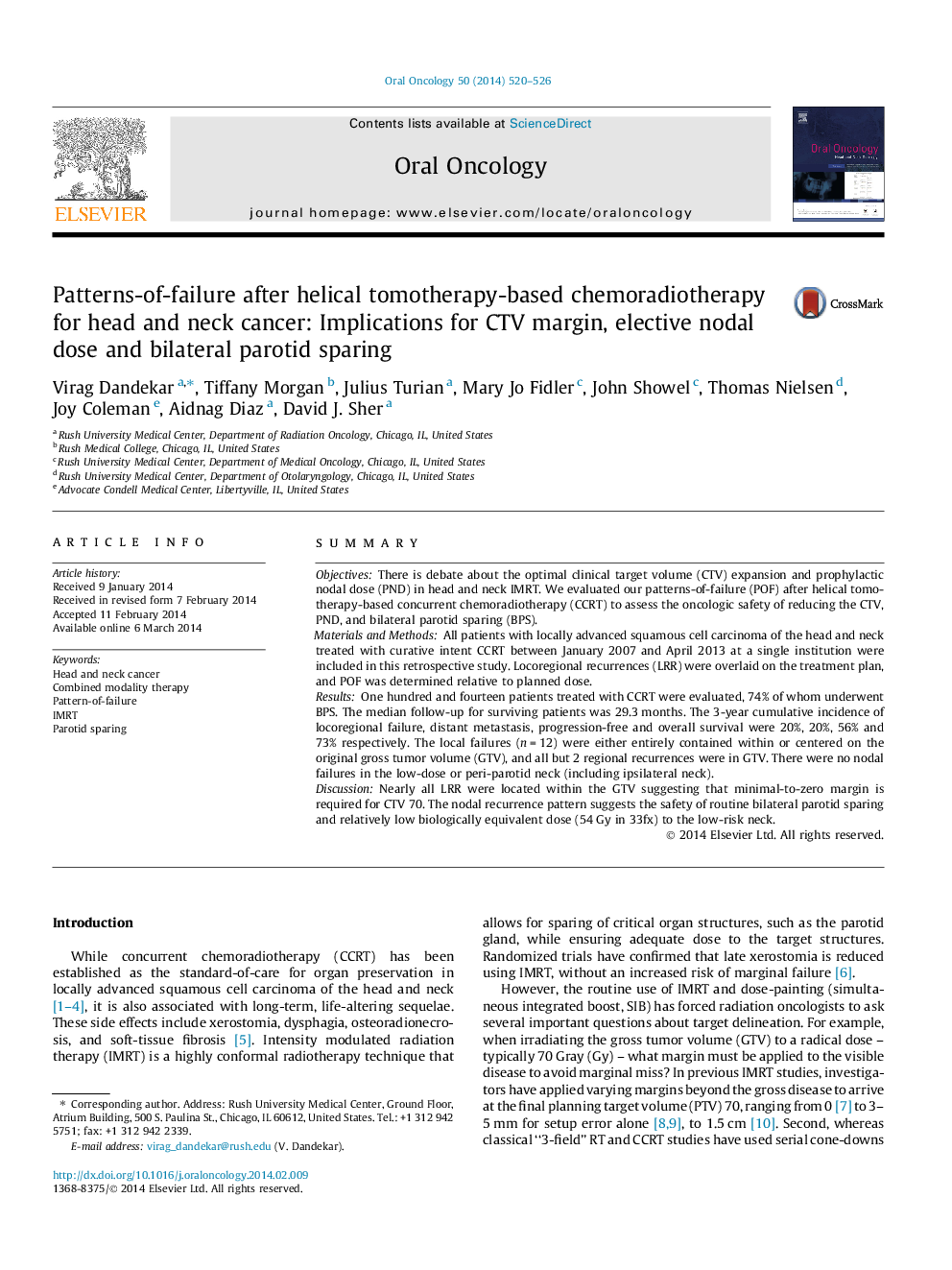| Article ID | Journal | Published Year | Pages | File Type |
|---|---|---|---|---|
| 3164258 | Oral Oncology | 2014 | 7 Pages |
SummaryObjectivesThere is debate about the optimal clinical target volume (CTV) expansion and prophylactic nodal dose (PND) in head and neck IMRT. We evaluated our patterns-of-failure (POF) after helical tomotherapy-based concurrent chemoradiotherapy (CCRT) to assess the oncologic safety of reducing the CTV, PND, and bilateral parotid sparing (BPS).Materials and MethodsAll patients with locally advanced squamous cell carcinoma of the head and neck treated with curative intent CCRT between January 2007 and April 2013 at a single institution were included in this retrospective study. Locoregional recurrences (LRR) were overlaid on the treatment plan, and POF was determined relative to planned dose.ResultsOne hundred and fourteen patients treated with CCRT were evaluated, 74% of whom underwent BPS. The median follow-up for surviving patients was 29.3 months. The 3-year cumulative incidence of locoregional failure, distant metastasis, progression-free and overall survival were 20%, 20%, 56% and 73% respectively. The local failures (n = 12) were either entirely contained within or centered on the original gross tumor volume (GTV), and all but 2 regional recurrences were in GTV. There were no nodal failures in the low-dose or peri-parotid neck (including ipsilateral neck).DiscussionNearly all LRR were located within the GTV suggesting that minimal-to-zero margin is required for CTV 70. The nodal recurrence pattern suggests the safety of routine bilateral parotid sparing and relatively low biologically equivalent dose (54 Gy in 33fx) to the low-risk neck.
